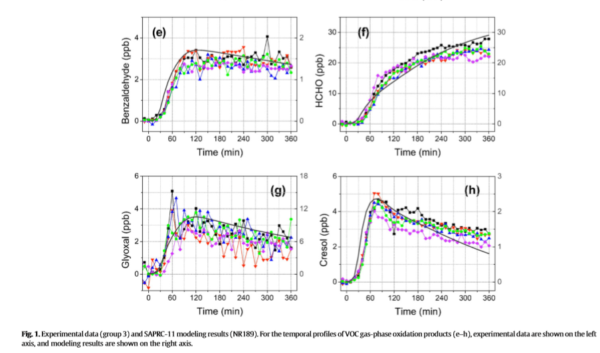Smog chambers are widely used in laboratory studies of aerosol formation and evolution under complex air pollution scenarios. In a recent study conducted at CSIRO Energy in NSW, Australia [1], a mixture of aromatic hydrocarbons, NH3 and other oxidation products were successfully monitored by SIFT-MS to study aerosol nucleation and growth process. The intention was to assess the contribution of NH3 to aerosol formation, which is a newly emerged topic of interest related to severe haze events in China.
The experiments were carried out in a 26.76-m3 smog chamber and the gases (NH3, NO2 and NO) were injected into the chamber at controlled flow rates. Known amounts of hydrocarbons were supplied at sub-200 ppbV concentrations over a 10-minute period, in a flow of nitrogen. Mixed ultraviolet lamps (80 in total) were used to yield desired levels of photolysis rates.
SIFT-MS’s core benefits, namely the use of multiple reagent ions (H3O+, NO+ and O2+) and precise ultra-soft chemical ionization of analyte VOCs, enabled the researchers to easily monitor aerosol formation. The data generated were validated by comparison with simulated concentrations of the monitored gaseous species (shown in figure below). SIFT-MS produced data with very high time resolution and matched the model output with great accuracy, at low ppbV levels.

For more information on applications of SIFT-MS in atmospheric research, please contact us.
[1] Kangwei Li, Linghong Chen, Stephen J. White, Hai Yu, Xuecheng Wu, Xiang Gao, Merched Azzi, Kefa Cen, 2018, Smog chamber study of the role of NH3 in new particle formation from photo-oxidation of aromatic hydrocarbons, Science of The Total Environment, vol. 619–620, pages 927-937, https://doi.org/10.1016/j.scitotenv.2017.11.180.
